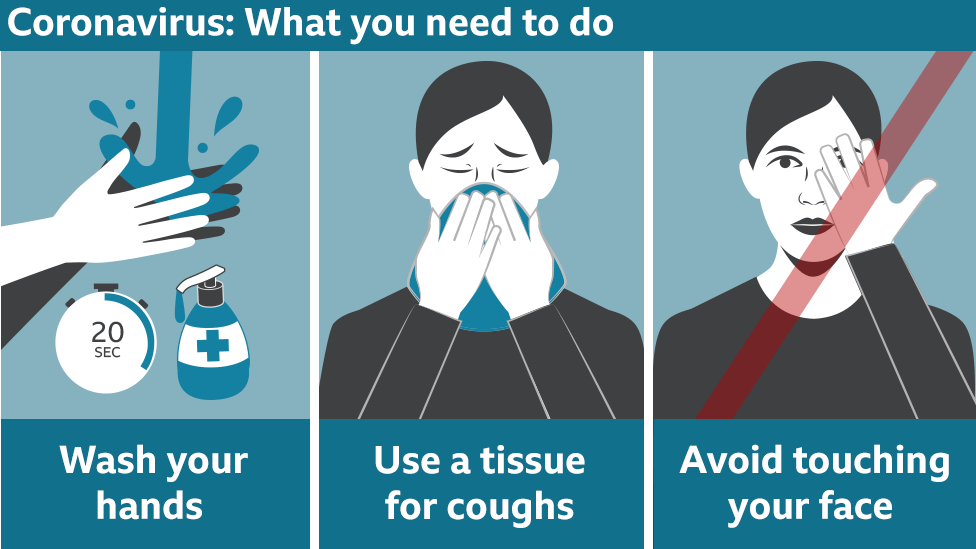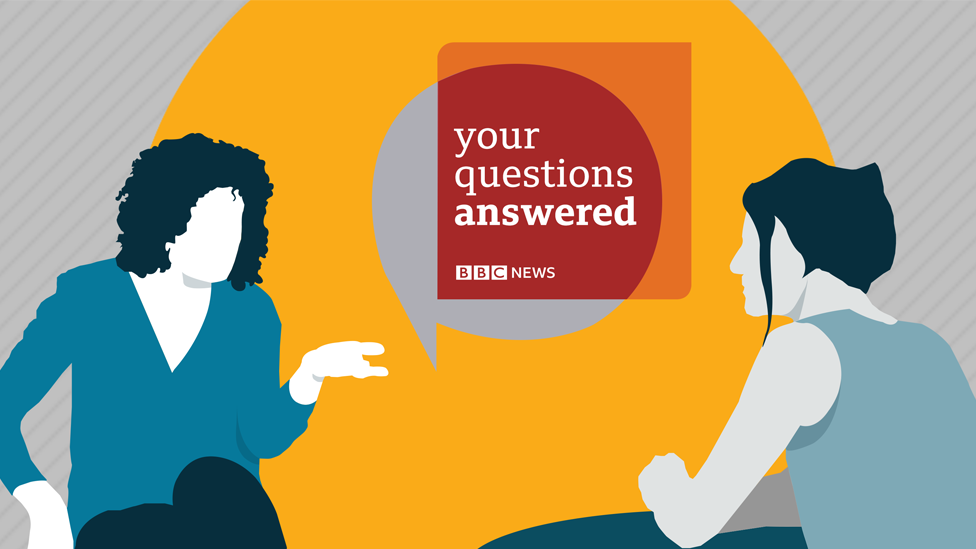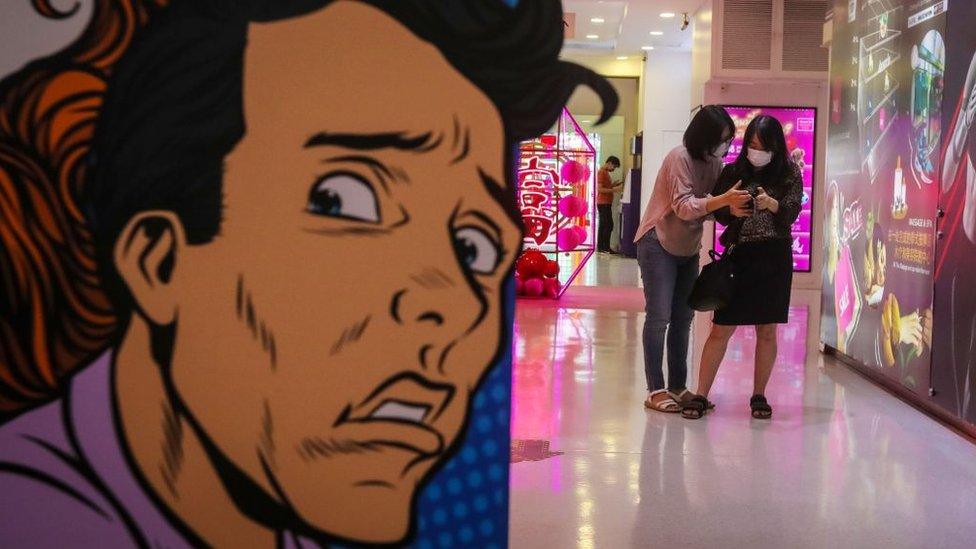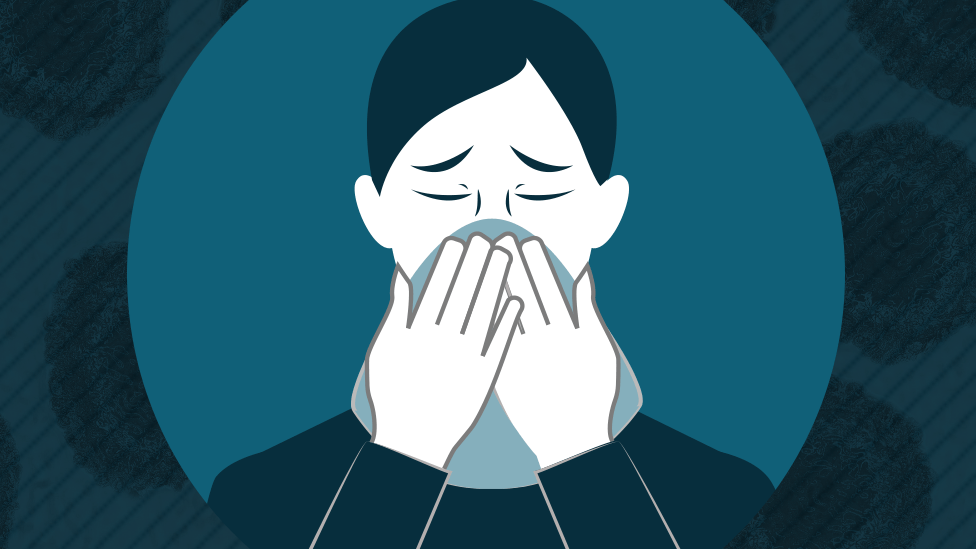Coronavirus: Should Americans be worried?
- Published
'The positive things we learnt from quarantine'
The coronavirus that began in Wuhan, China, has now reached dozens of countries and has started to take its toll in the US.
So how prepared is the country?
How fast is Covid-19 spreading?
Thousands of new cases across the world are being reported each day, and the true scale could be 10 times higher., external
There are 1,323 confirmed cases in the US, 117 in Canada.
Thirty-eight people have died in the US due to the virus and one person has died in Canada.
Officials say risk remains low for the general US public, but is growing.
Bans on large gatherings have been announced, with national guard troops dispatched to cities on both the US East and West coasts
Several states, including Washington, have declared emergencies to deal with the outbreak. The global outbreak has now been labelled a pandemic by the World Health Organization (WHO).
Stock markets around the world have been in free-fall forcing trading to temporarily halt and causing many people to worry about their retirement funds.

EASY STEPS: What can I do?
A SIMPLE GUIDE: What are the symptoms?
LOCKDOWN: Can the US do what Italy did?
IMMUNITY: Coronavirus: Are women and children less affected?
MAPS AND CHARTS: Visual guide to the outbreak
VIDEO: The 20-second hand wash


How prepared is the US?
President Donald Trump has claimed the situation is "well under control", while officials at the Centres for Disease Control (CDC) warn the virus will spread and may severely disrupt daily life.
Relative to other countries dealing with coronavirus, the US has done only a handful of tests.
On 6 March, the president signed an $8.3bn (£6.4bn) emergency funding bill to develop a vaccine and help states combat the virus. The UK, for instance, has allocated $38bn (£30bn) to deal with its impacts.
Coronavirus 'risk to the American people remains very low'
Concerns have deepened amid the sharp rise in the number of cases reported in the first week of March. More than half of US states have now reported cases of the sickness.
What are the main concerns?
High medical costs make the virus particularly problematic - many Americans avoid doctor's visits because of unaffordable charges.
On 10 March, Vice-President Mike Pence - who is leading the US response - announced that a group of major health insurance companies covering almost 240 million Americans have agreed not to charge patients for coronavirus testing.
They have also vowed to extend coverage for Covid-19 treatment in all benefit plans - but it's unclear what this extended coverage will entail, and it could still leave insured Americans with thousands of dollars in medical bills.
Taking sick leave is another concern. Not all employers offer paid leave and workplace culture often pushes employees to go to work ill. President Trump's claim that coronavirus patients may get better "by sitting around and even going to work" drew widespread criticism from health experts.
This could contribute to the virus spreading, as infected people may not show significant symptoms for up to 14 days.
What's happening with testing?
Mr Pence has said one million tests are available in all state labs. So far fewer than 10,000 people have been tested - compared to 20,000 per day in South Korea.
The administration has also granted labs permission to develop and use their own diagnostic tests, external even as they are being reviewed by the national drug agency.
Critics say the shortage of test and facilities has contributed to the community spread of the virus and some have raised doubts that health officials can meet the demand for more tests.
The tests themselves have also had problems. Last month, some health centres noted difficulties using CDC tests. Kits developed at the CDC's lab in Atlanta were contaminated, Axios reported, external. Officials say the manufacturing issues have since been resolved.
Where can you get tested in the US?
You will need a doctor to refer you to either the CDC or a state health department for testing. Your doctor can take a sample - a nose or throat swab - but it must be processed at a proper facility.
You should call your doctor's office first - officials advise against going to an emergency room for testing.
At least four states - California, Washington New York and Nevada - have mandated some insurers to cover tests.
Even if the test is covered, however, patients may still have to pay fees for office or emergency room visits and any other tests, as well as hospital stays.
And those who work at self-insured companies and uninsured Americans do not have these protections.
What should you do?
You should wash your hands regularly - using soap and water for at least 20 seconds, avoid contact with people who have respiratory illness symptoms and stay away from animals.
The CDC does not recommend wearing a face mask if you are not sick or taking care of someone who is ill.
It may be useful to ensure you have enough supplies - like extra water, non-perishable food and medicines - in case you need to self-quarantine.
You might want to discuss work-from-home options with your employer and plan for child care if schools need to close.


How do you self-quarantine?
If you self-isolate for 14 days, that means not going to work, school, or other public places and avoiding any public transit, including ride-shares and taxis.
Friends and family can drop off supplies, but you shouldn't have any visitors. If you share a home with others, the key is to limit contact as much as possible. Try to avoid using the kitchen when others are there and make sure you clean all surfaces daily.
While the CDC has encouraged businesses to not punish workers who self-quarantine, in the US, the decision is still ultimately left to the employers.
Many states do not have laws regarding whether an employer can fire an employee who is in quarantine, Forbes reported, external.
A February survey by the Business Group on Health, published by the New York Times, external, found 68% of employers would pay employees for a quarantine, even if they were unable to work from home, while 12% would pay only for a set amount of time. Another 20% said they had not yet made a decision.
New York Governor Andrew Cuomo has called for a paid sick leave bill, which he has championed in the past.
Watch how germs spread and how you can prevent it
- Published26 February 2020

- Published22 February 2022

- Published20 February 2020

- Published14 September 2016

- Published6 October 2021
